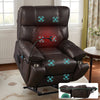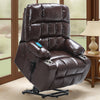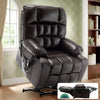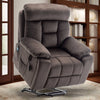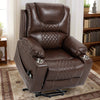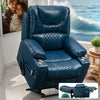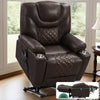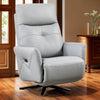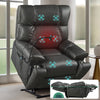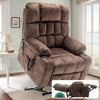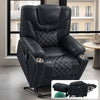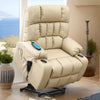The Growing Demand for Power Assist Lift Chairs in the U.S. Market
Understanding the Demographics: Who Needs Lift Chairs?
The need for power assist lift chairs spans across various groups in the U.S. Seniors who struggle with mobility find these chairs essential for maintaining independence. People with disabilities also benefit greatly from the added support and ease of movement provided by lift chairs. Moreover, individuals recovering from surgeries, such as hip or knee replacements, often require lift chairs during their rehabilitation process. The rising number of aging Baby Boomers has significantly contributed to the increased demand, as they seek comfortable solutions that allow them to age in place. With the population of those aged 65 and over projected to reach over 80 million by 2040, the market for lift chairs is expected to grow correspondingly.
The Role of Power Assist in Aiding Mobility
Power Assist Lift Chairs significantly aid mobility for those with limited physical abilities. The feature offers controlled movements. This helps users stand, sit, and recline with ease. It reduces strain on muscles and joints. These chairs support those with conditions like arthritis or Parkinson's. They also benefit post-surgery patients and the elderly. Increased independence is a major advantage of using these chairs. With a simple push of a button, users gain freedom in daily tasks. This function of lift chairs is transforming lives across the U.S.
Technological Advancements in Power Assist Lift Chairs
Innovations in Lift Chair Design and Functionality
- Enhanced Positioning Options: Latest models offer a variety of positions for optimal comfort.
- User-Friendly Controls: Simple remotes and voice-activated systems for ease of use.
- Memory Settings: Chairs now recall preferred positions for quick adjustment.
- Sturdy Build with Style: Durable materials combined with modern aesthetics.
- Integration with Smart Homes: Chairs that can sync with other home devices.
- Eco-Friendly Materials: Use of sustainable fabrics and components.
- Lightweight and Portable Designs: Chairs that can be easily moved from one place to another.
- Advanced Fabrics: Materials that resist stains, odor, and bacteria for hygiene.
- Health Monitoring Features: Sensors that track vitals and alert for irregularities.
- Battery Backup Systems: Ensuring the chair functions during power outages.
Safety and Comfort: How Technology Enhances User Experience
Advancements in power assist technology have focused on user safety and comfort. These chairs now have features like emergency battery backups and soft, pressure-relieving materials. They also come with customizable positions to reduce the risk of pressure sores. Plus, the latest models include motion sensors and auto-braking systems. These prevent accidents when standing up or sitting down. Simple remote controls make adjusting the chair easy, even for those with limited dexterity.
Navigating Regulations and Standards for Lift Chairs
Complying with Americans with Disabilities Act (ADA)
Ensuring that power assist lift chairs are ADA-compliant is vital. The ADA sets standards for accessibility. These standards aim to ensure that individuals with disabilities can use lift chairs without barriers. Manufacturers must follow ADA guidelines when designing lift chairs. This includes aspects like size, height, and control mechanisms. Chair features must be usable for people with limited mobility or strength. ADA compliance also means lift chairs need to fit within various public and private spaces. By following ADA requirements, lift chairs enhance independence for users. They also promote inclusiveness in different environments.
Safety Standards: Ensuring Compliance and Quality in Lift Chairs
To ensure that power assist lift chairs meet users' needs safely, they must adhere to strict standards. These standards cover performance, durability, and safety. They protect users from hazards like electrical shocks, mechanical failures, or material weaknesses. Chair makers must follow them to sell their products in the U.S. market. Compliance with these safety standards is crucial for quality assurance and the trust of consumers. Recognized bodies like the FDA, UL, and BIFMA set these standards. They often check the chairs to make sure they are safe and reliable. Chairs that pass these checks get a certification mark. This shows they have met all necessary safety requirements. It's a sign of a high-quality and trustworthy product for customers.








